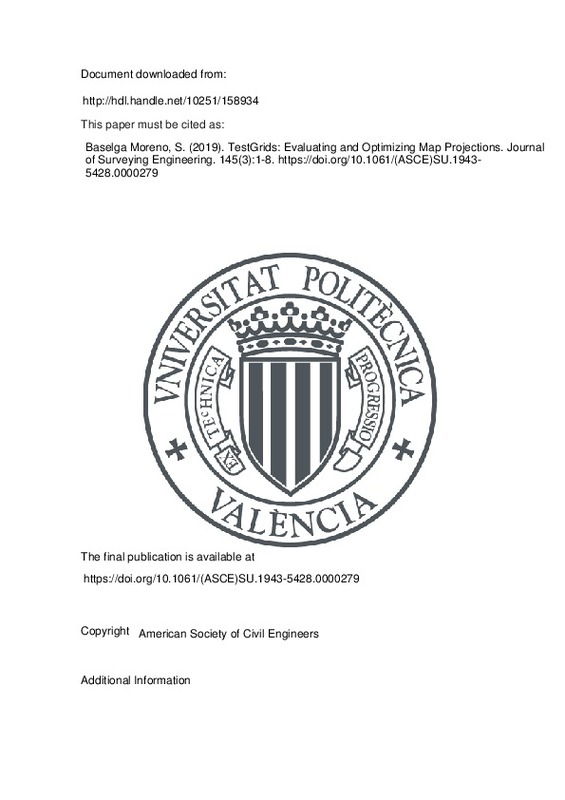|
Resumen:
|
[EN] In the study of map projections, it is relatively simple to obtain meaningful estimators of distortion for a small area. The definition and especially the evaluation of global distortion measures (i.e., estimators ...[+]
[EN] In the study of map projections, it is relatively simple to obtain meaningful estimators of distortion for a small area. The definition and especially the evaluation of global distortion measures (i.e., estimators representing the distortion worldwide or in a continent-like area) are undoubtedly more troublesome. Therefore, it is relatively common to find that recommendations for the parameters to use in a particular map projection, be it devised for a continent or a country, are based on simple rules (like the one-sixth rule of thumb for conic projections), with no possibility of further improvement in terms of resulting distortions and sometimes even with no knowledge at all of the sizes of these distortions. Although the choice of map defining parameters is normally made for reasons other than distortion minimization, such as ease of use (e.g., integer or half-integer numbers may be preferable), preservation of conventional or traditional definitions, and uniformity of parameters between neighboring regions, it is always worthwhile to know the optimal set of parameters in terms of minimal distortion. Then, the cartographer may mindfully deviate from this optimal set, documenting the differences in defining parameters and in the resulting distortions. The present research provides a means to do this by extending a related work presented in a previous contribution, where the evaluation and optimization of distortions were studied for a single map projection and only two areas of interest. To this end, a new tool has been developed and presented in this paper. This tool allows users to evaluate several measures of distortion for the most common conformal and equal-area projections within user-defined geographic boundaries of interest. Also embedded in the tool and transparent to users are global optimization techniques operating on Fibonacci grids, which permit the optimization of parameters for the particular map projection and area of interest under two possible criteria: minimization of typical distortion or minimization of extreme distortions. This tool and the associated techniques are applied to several official projections to analyze their original performance and to propose new parameters that significantly improve the resulting distortions while leaving room for users to easily evaluate and optimize the tool for the lowest distortions of these projections within their regions of interest.
[-]
|







![[Cerrado]](/themes/UPV/images/candado.png)


